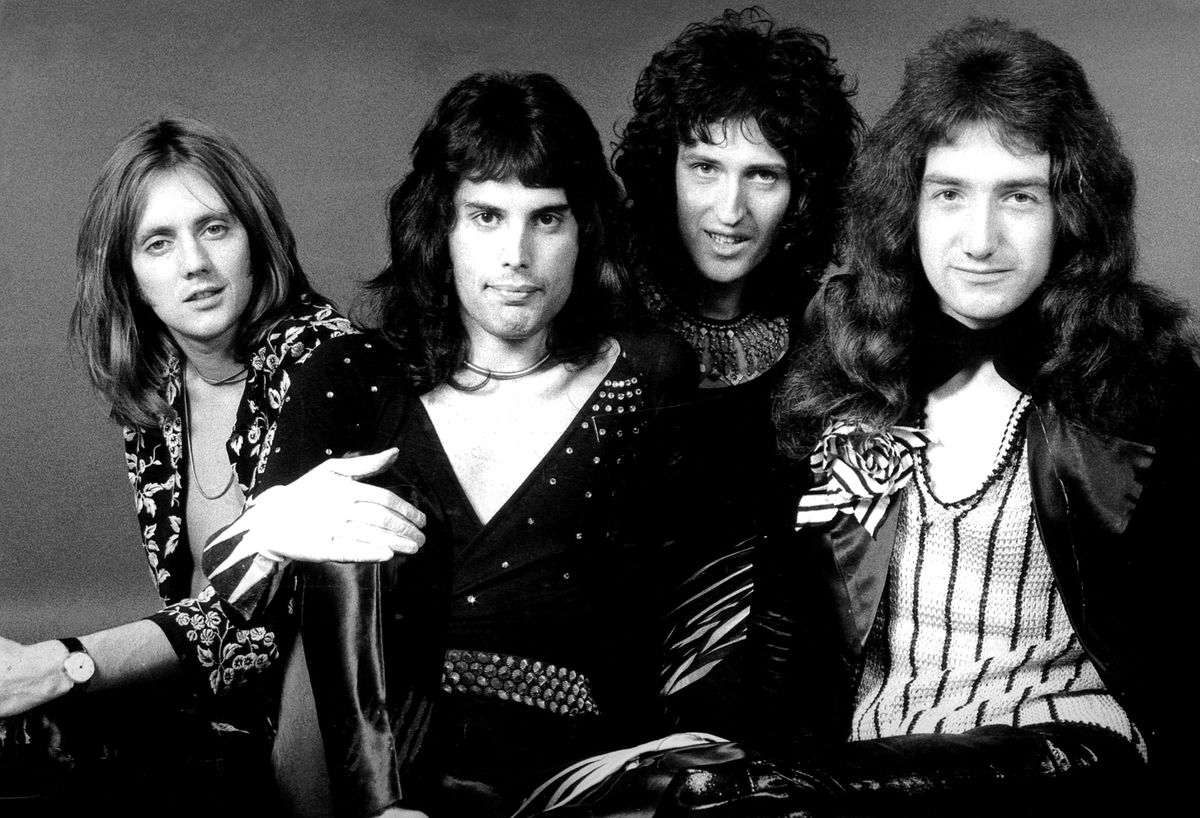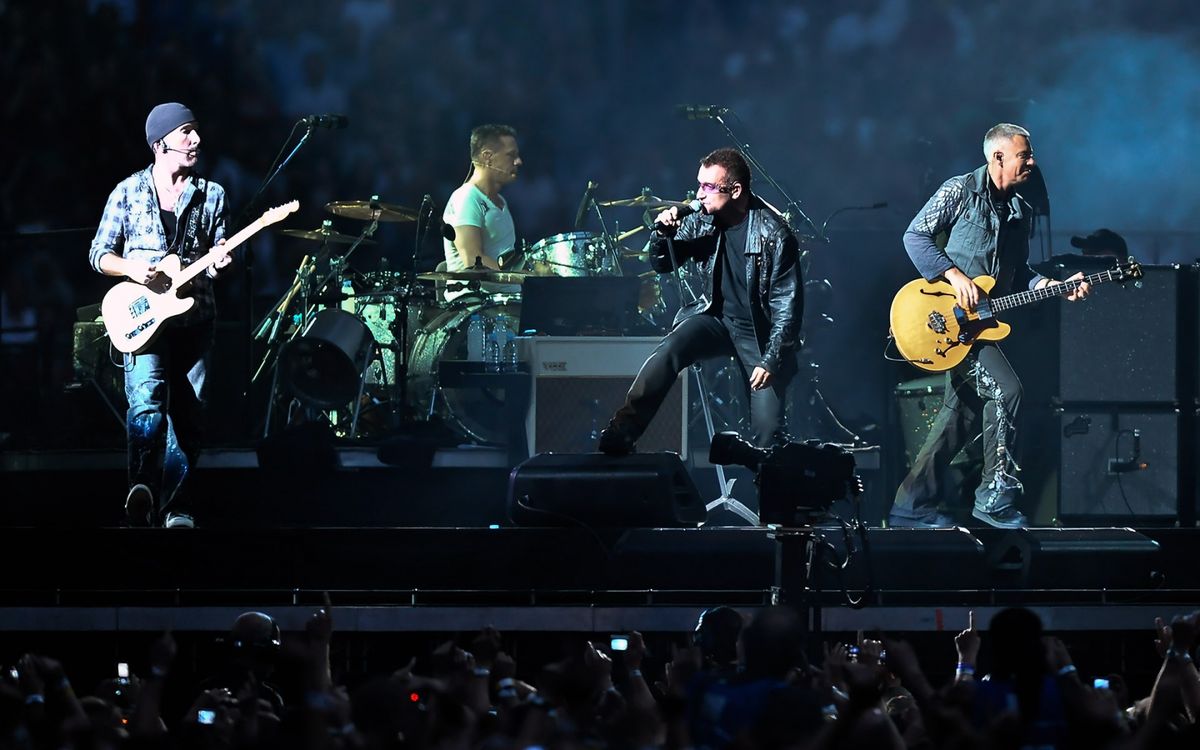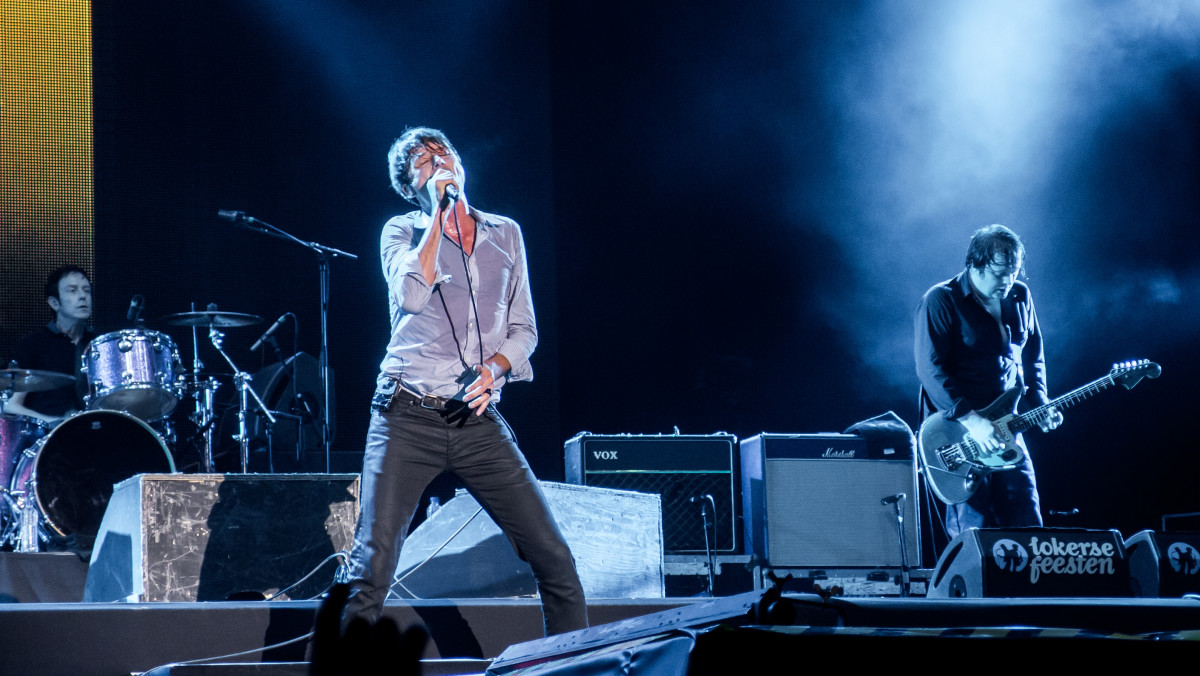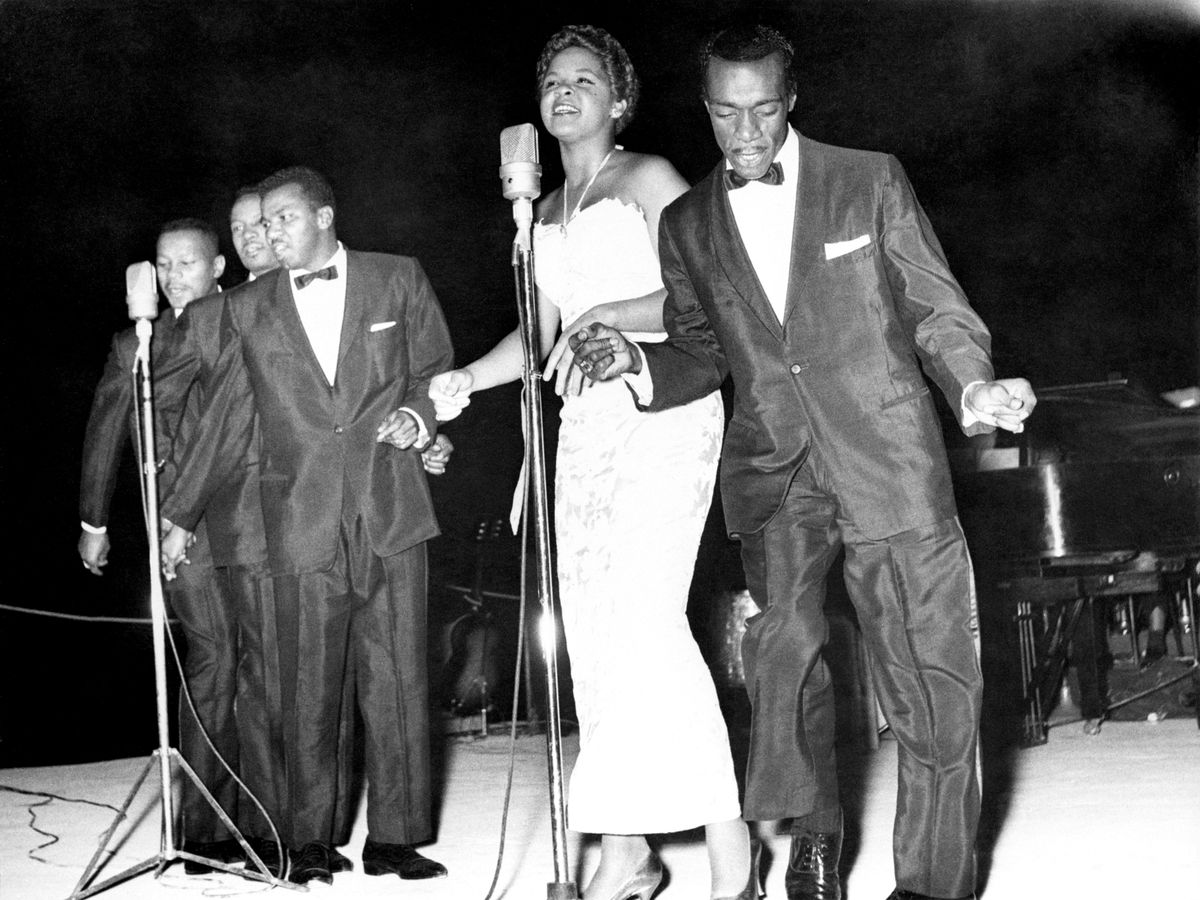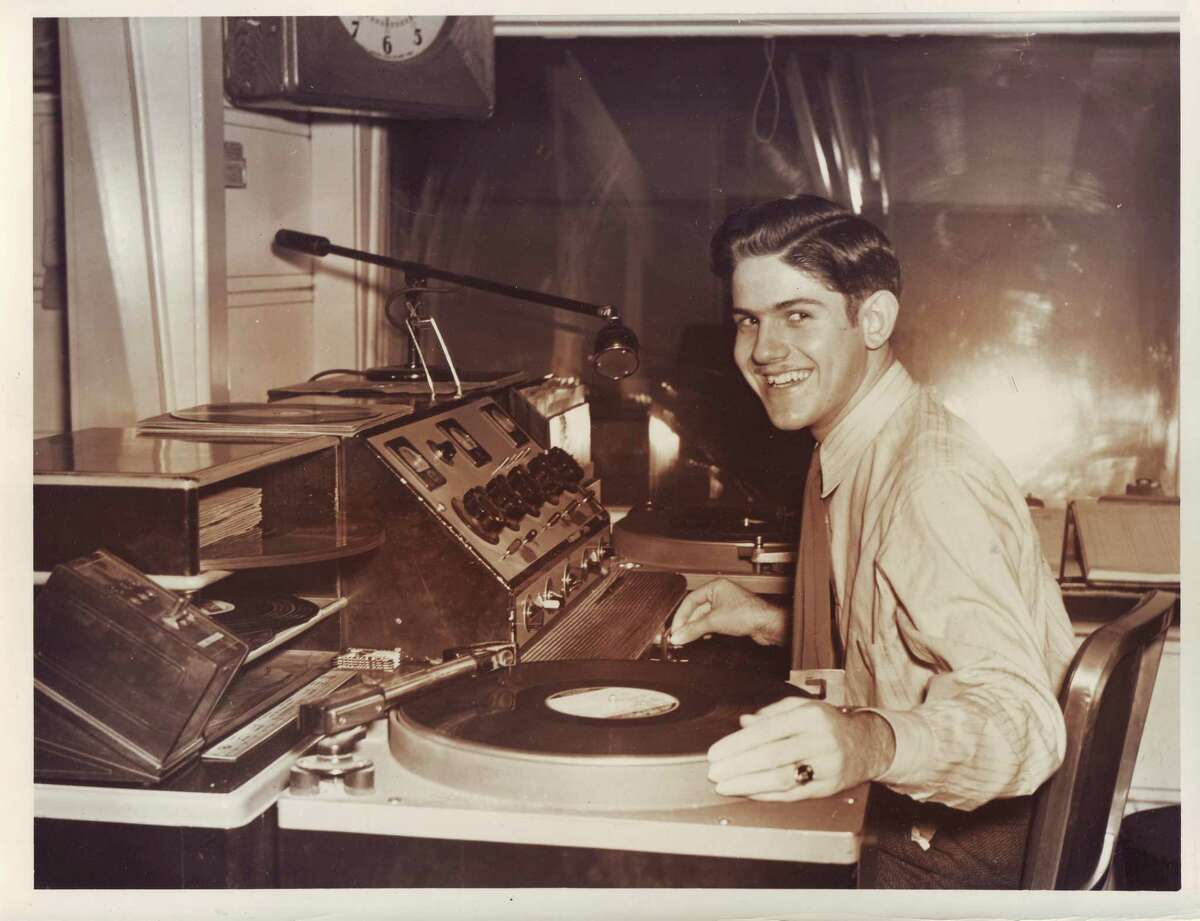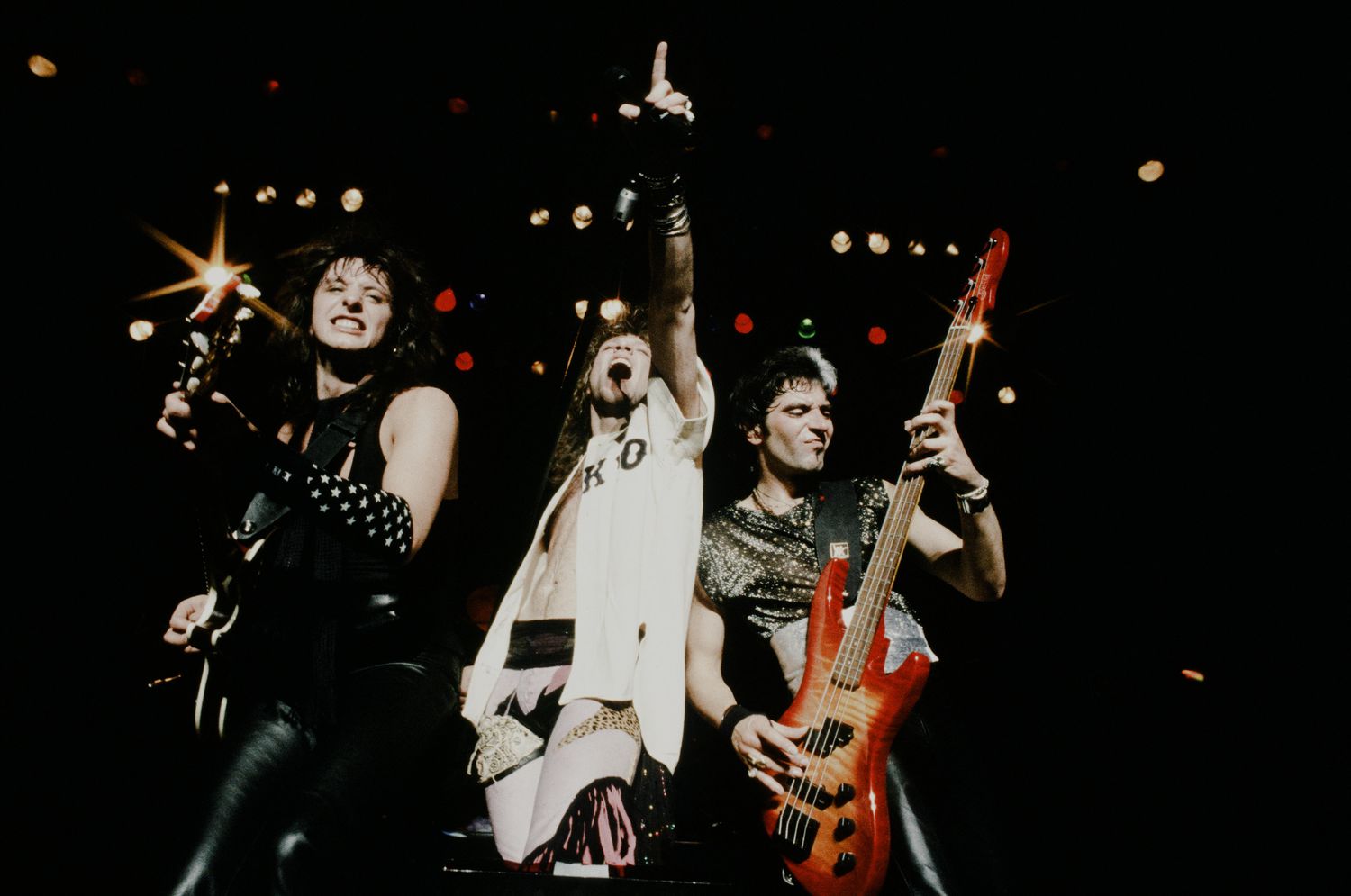

Rock
Rock Music In The 80s Was Like What
Modified: January 22, 2024
Discover the electrifying sound of 80s Rock music and its impact on the music industry. Dive into the unforgettable era of headbanging riffs and anthemic ballads that defined a generation.
(Many of the links in this article redirect to a specific reviewed product. Your purchase of these products through affiliate links helps to generate commission for AudioLover.com, at no extra cost. Learn more)
Table of Contents
Introduction
The 80s was a decade that brought forth a revolution in music, especially the genre of rock. This era marked a significant shift from the punk and new wave movements of the late 70s to the advent of mainstream rock music. The 80s were characterized by extravagant fashion, vibrant music videos, and energetic live performances, which all contributed to the rise and popularity of rock music.
Rock music in the 80s reflected the social, cultural, and political climate of the time. It provided an outlet for rebellious and independent expression, resonating with a generation seeking to break free from societal constraints. While the roots of rock music can be traced back to the 1950s and 60s, the 80s brought a unique sound and style that defined the era.
The emergence of MTV, the first music television channel, and the increasing accessibility of music videos allowed rock bands and artists to reach audiences like never before. Iconic bands such as Guns N’ Roses, Bon Jovi, and Def Leppard gained widespread popularity with their catchy hooks, anthemic choruses, and larger-than-life personalities.
Furthermore, advancements in technology and the rise of synthesizers gave birth to a new wave of electronic and synth-pop-infused rock music. Bands such as Duran Duran and Depeche Mode incorporated electronic elements into their sound, bridging the gap between traditional rock and the emerging electronic music scene.
In this article, we will explore the origins, characteristics, popular subgenres, and iconic bands of 80s rock music. We will delve into the influence and impact of this era and discuss its eventual evolution and decline. Join us on this nostalgic journey through the vibrant soundscape of 80s rock music and discover the energy and spirit that defined an entire generation.
The Origins of Rock Music in the 80s
The roots of rock music in the 80s can be traced back to the rebellious spirit of previous decades. Rock and roll emerged in the 1950s as a fusion of various genres, including rhythm and blues, country, and gospel music. The 60s and 70s saw the evolution of rock music through the psychedelic sounds of bands like The Beatles and Pink Floyd, as well as the hard-hitting riffs of Led Zeppelin and Black Sabbath.
By the time the 80s arrived, rock music had already established itself as a powerful and influential genre. However, the 80s brought a distinctive sound and style that set it apart from its predecessors. One of the key factors in shaping 80s rock was the emergence of glam rock and the influence of bands like T.Rex, David Bowie, and Queen. These artists embraced flamboyant aesthetics and theatrical performances, setting the stage for the extravagant fashion and visuals that would dominate the decade.
Another significant development in the 80s was the integration of synthesizers and electronic elements into rock music. The rise of new wave and synth-pop bands such as the Human League and Talking Heads brought a fresh and innovative sound to the scene. This fusion of rock and electronic music laid the groundwork for the future evolution of alternative and indie rock in the following decades.
Furthermore, the 80s witnessed the emergence of subgenres that pushed the boundaries of rock music. Hair metal bands like Mötley Crüe, Poison, and Guns N’ Roses brought a blend of flashy guitar solos, catchy hooks, and glam fashion, captivating a massive audience. Thrash metal emerged with bands like Metallica and Slayer, delivering fast-paced, aggressive music that would influence the heavier side of rock for years to come.
The political and cultural climate of the 80s also played a significant role in shaping rock music. The Reagan era in the United States and the anti-establishment sentiments of the punk movement fueled a sense of rebellion and dissatisfaction, which was reflected in the music. Bands like The Clash and The Sex Pistols became symbols of punk rock, advocating for social change and challenging the status quo.
In summary, the origins of rock music in the 80s can be attributed to a culmination of musical influences from previous decades, the emergence of glam rock aesthetics, the incorporation of electronic elements, and the socio-political climate of the time. These factors laid the foundation for the diverse and dynamic rock music scene that would dominate the decade and leave a lasting impact on music history.
Characteristics of 80s Rock Music
80s rock music was characterized by its unique sound, style, and energy that set it apart from other genres. It embraced a blend of influences from previous decades while incorporating new elements that reflected the cultural and technological advancements of the time.
One of the defining characteristics of 80s rock music was its emphasis on big, anthemic choruses. Songs were designed to be memorable and catchy, with sing-along lyrics and infectious melodies. This approach resonated with audiences, creating an immersive and participatory concert experience.
Another notable feature of 80s rock was the prevalence of guitar solos. A key influence from the heyday of classic rock, guitar solos in 80s rock were often flashy and technically impressive, showcasing the skills of the guitarists. Artists like Eddie Van Halen, Slash, and Joe Satriani became virtuosos whose signature solos defined their bands’ sound.
Furthermore, the incorporation of synthesizers and electronic elements added a new dimension to 80s rock music. Bands like Duran Duran, Depeche Mode, and The Police seamlessly blended rock instrumentation with synthesizers, creating a hybrid sound that bridged the gap between rock and the emerging electronic music scene.
Visual aesthetics also played a crucial role in 80s rock. This era was known for its flamboyant fashion, elaborate hairstyles, and over-the-top stage performances. Bands like Kiss, Poison, and Whitesnake embraced a larger-than-life image, with extravagant costumes, makeup, and theatrical stage sets, turning rock concerts into memorable spectacles.
Lyrically, 80s rock often explored themes of rebellion, love, relationships, and societal issues. Songs would often tackle personal struggles, political commentary, or escapism. The lyrics reflected the emotions and experiences of the era, resonating with listeners who were navigating a rapidly changing world.
The production value of 80s rock music was also distinctive. Advances in recording technology allowed for clearer, punchier, and more polished sound quality. The use of layered vocals, harmonies, and multi-track recordings contributed to the larger-than-life sound that defined many 80s rock hits.
In summary, the characteristics of 80s rock music included anthemic choruses, flashy guitar solos, the integration of synthesizers, flamboyant visual aesthetics, lyrical exploration of personal and societal themes, and high-quality production. These elements combined to create a sound and style that captured the larger-than-life spirit of the 80s and made rock music in that decade truly iconic.
Popular Subgenres in 80s Rock
The 80s was a decade that witnessed the rise of various subgenres within the rock music scene. These subgenres brought unique sounds, styles, and cultures that contributed to the diversity and evolution of rock music during this era.
One of the most prominent subgenres of the 80s was glam metal, also known as hair metal. Bands like Mötley Crüe, Poison, and Bon Jovi dominated the charts with their energetic and flamboyant performances, catchy melodies, and glamorous image. Glam metal blended the hard-hitting riffs of heavy metal with the pop sensibilities of rock, creating a sound that resonated with a massive audience.
Another subgenre that emerged in the 80s was thrash metal. Bands like Metallica, Slayer, and Anthrax brought a heavier and faster approach to rock music with aggressive guitar riffs, intense drumming, and politically charged lyrics. Thrash metal was characterized by its raw energy and rebellious spirit, appealing to fans seeking a more aggressive and subversive sound.
New wave and synth-pop were also influential subgenres in the 80s. Artists like Duran Duran, Depeche Mode, and The Cure brought a more electronic and experimental sound to the rock music scene. Synthesizers and drum machines were prominently featured, creating a blend of rock and electronic music that captured the spirit of the time. These bands brought a sleek and stylish image, often exploring themes of love, romance, and introspection in their lyrics.
Furthermore, alternative rock started to emerge as a distinct subgenre in the 80s, paving the way for its widespread popularity in the following decade. Bands like R.E.M., The Smiths, and The Replacements infused rock music with elements of punk, folk, and indie sensibilities. Alternative rock represented a rebellion against mainstream music, and its introspective and sometimes melancholic lyrics resonated with a generation seeking something different from the pop-oriented sound dominating the charts.
Hard rock and heavy metal continued to thrive in the 80s, with bands like Guns N’ Roses, Iron Maiden, and Def Leppard making a significant impact. These bands brought a combination of powerful vocals, blistering guitar solos, and anthemic choruses that appealed to fans craving a dose of hard-hitting and intense rock music.
Lastly, progressive rock had a continued presence in the 80s, with bands like Rush and Yes releasing albums that showcased their technical prowess and intricate song structures. Prog rock pushed the boundaries of rock music, incorporating elements of classical, jazz, and other genres to create complex and thought-provoking compositions.
In summary, the 80s witnessed the rise of several popular subgenres in rock music, including glam metal, thrash metal, new wave, synth-pop, alternative rock, hard rock, heavy metal, and progressive rock. Each subgenre brought its own distinct sound, style, and cultural impact, contributing to the rich tapestry of rock music during this iconic decade.
Iconic Rock Bands and Artists of the 80s
The 80s was a decade that produced numerous iconic rock bands and artists, whose music and performances left an indelible mark on popular culture. These artists helped shape the sound and style of 80s rock and became synonymous with the era.
Guns N’ Roses burst onto the scene in the late 80s with their debut album “Appetite for Destruction,” which became the highest-selling debut album of all time. Known for their raw energy, powerful vocals, and hard-hitting guitar riffs, Guns N’ Roses epitomized the rebellious spirit of rock. Hits like “Sweet Child O’ Mine” and “Welcome to the Jungle” secured their place as one of the greatest rock bands of all time.
Bon Jovi became synonymous with 80s rock, capturing the hearts of fans with crowd-pleasing anthems and radio-friendly hits. The band’s chart-topping songs, such as “Livin’ on a Prayer” and “Wanted Dead or Alive,” showcased their knack for crafting catchy melodies and relatable lyrics. Bon Jovi’s charismatic frontman, Jon Bon Jovi, became a global icon, embodying the essence of rock stardom and capturing the hearts of millions.
Def Leppard achieved massive success in the 80s with their album “Hysteria,” which became one of the best-selling albums of all time. Known for their infectious hooks, melodic vocals, and innovative use of multi-layered guitars, Def Leppard created a sound that defined the arena rock scene. Songs like “Pour Some Sugar on Me” and “Love Bites” solidified their place as one of the key bands of the decade.
The legendary rock band Queen continued their reign in the 80s, crafting anthems that would go on to become timeless classics. Led by the charismatic Freddie Mercury, Queen delivered iconic hits such as “We Will Rock You,” “We Are the Champions,” and “Another One Bites the Dust.” Their theatrical performances and eclectic blend of rock, pop, and opera solidified their status as one of the greatest rock bands of all time.
While the 80s saw the emergence of new subgenres, classic rock bands continued to make a significant impact. U2, with their socially and politically conscious lyrics, became a voice for change with hits like “Sunday Bloody Sunday” and “With or Without You.” The Rolling Stones continued to tour and release music, showcasing their enduring influence with songs like “Start Me Up” and “Rock and a Hard Place.”
The 80s also gave rise to influential female rock acts, such as Joan Jett and The Runaways. Known for their rebellious attitude and punk-infused sound, Joan Jett’s hits like “I Love Rock ‘n’ Roll” and “Bad Reputation” became anthems for a generation.
Other notable rock bands and artists of the 80s include AC/DC, Van Halen, Rush, Metallica, Duran Duran, The Police, and many more. Each artist brought their own unique sound, style, and contribution to the vibrant tapestry of 80s rock music.
In summary, the 80s produced an array of iconic rock bands and artists that left a lasting impact on music history. Whether it was the raw energy of Guns N’ Roses, the stadium-filling anthems of Bon Jovi, or the eclectic sound of Queen, these artists defined the era and continue to be celebrated for their contributions to rock music.
Influence and Impact of 80s Rock Music
The influence and impact of 80s rock music cannot be overstated. This decade brought forth a wave of innovative sounds, styles, and attitudes that resonated with a generation and left a lasting imprint on the music industry.
One of the significant contributions of 80s rock music was its influence on pop culture and fashion. The visually striking aesthetics of bands like Guns N’ Roses, Bon Jovi, and Madonna set the tone for the extravagant and flamboyant styles that defined the decade. The influence of these rock icons could be seen in the way people dressed, styled their hair, and even their attitudes. The 80s rock scene created a sense of rebellion and individuality that transcended the music alone.
Furthermore, 80s rock music played a pivotal role in breaking down barriers and challenging social norms. It provided an outlet for expression to fans who felt disconnected from mainstream society. The anthemic choruses and relatable lyrics of bands like U2 and Queen resonated deeply with listeners, inspiring them to stand up for their beliefs and effect change.
The impact of 80s rock music also extended beyond its immediate era. The blending of rock with electronic elements laid the groundwork for the emergence of alternative rock in the 90s, which would go on to dominate the music scene for years. Bands like Nirvana, Pearl Jam, and Smashing Pumpkins drew inspiration from the 80s rock sound, incorporating elements of grunge and indie rock while maintaining the rebellious spirit of their predecessors.
The music industry itself underwent significant changes influenced by the success of 80s rock. The rise of MTV and the increasing popularity of music videos allowed bands to reach a broader audience and create visual narratives that complemented their music. The music video became a powerful marketing tool, and artists who embraced this medium gained widespread popularity and commercial success.
Moreover, 80s rock music expanded the global reach of rock as a genre. Bands like Bon Jovi and Guns N’ Roses achieved unprecedented success internationally, introducing rock music to a wider audience. The influence of these bands continues to be felt today, with their songs still being played on radio stations and their music serving as a source of inspiration for current rock bands.
In summary, 80s rock music had a profound influence and impact on pop culture, fashion, and the way music was consumed. Its rebellious spirit, innovative sounds, and charismatic personalities shaped the decade and continue to resonate with audiences today. The fusion of rock with electronic elements paved the way for future genres, and the music videos that accompanied the songs became an integral part of the music industry. The impact of 80s rock music remains evident in the ongoing popularity and recognition of the artists and bands that defined the era.
Evolution and Decline of 80s Rock Music
The 80s marked a pivotal period of evolution and eventual decline for rock music. As the decade progressed, the genre faced shifting musical trends and changing cultural landscapes that would profoundly impact its trajectory.
Throughout the early 80s, rock music continued to thrive and diversify with the emergence of subgenres like glam metal, thrash metal, and new wave. However, as the decade moved towards the late 80s and early 90s, a combination of factors contributed to a decline in the popularity of traditional rock.
One significant factor was the rise of alternative rock and the grunge movement. Bands like Nirvana, Pearl Jam, and Soundgarden brought a raw and gritty sound that resonated with disillusioned youth. The angsty and introspective lyrics of these alternative rock acts spoke to a generation disillusioned with the commercialized, polished sound of mainstream rock, leading to a decline in popularity for many 80s rock bands.
Additionally, electronic and dance music gained prominence towards the late 80s, further shifting the musical landscape. In this era, techno, house, and hip-hop began to dominate the charts and club scenes, captivating audiences with their energetic beats and electronic soundscapes. This shift away from guitar-driven rock created a significant challenge for traditional rock bands to remain relevant and maintain commercial success.
Furthermore, by the late 80s, the excesses of the rock star lifestyle had become associated with decadence and frivolity. The image of the hard-partying rock star had lost its appeal, and the culture began to shift towards a more alternative, introspective, and socially conscious approach to music. This shift away from the excesses of 80s rock affected the popularity and commercial success of many traditional rock bands.
As the 90s approached, the decline of 80s rock was evident, as the mainstream music industry shifted its focus towards alternative rock, hip-hop, and electronic music. However, it’s important to note that while traditional rock may have declined in popularity, its influence continued to reverberate through different genres and future generations of musicians.
Moreover, the legacy of 80s rock is enduring. Many of the bands and artists from that era continue to have dedicated fan bases and their music remains iconic and influential. The music of the 80s continues to be celebrated and appreciated, and its impact on the broader rock music landscape cannot be underestimated.
In summary, the evolution and decline of 80s rock music were influenced by the rise of alternative and electronic genres, the shifting cultural landscape, and the changing tastes of music listeners. While traditional rock may have faced challenges during this time, its impact and legacy remain significant, and it continues to serve as a source of inspiration for musicians today.
Conclusion
The 80s was a transformative decade for rock music, leaving an indelible mark on the genre and popular culture as a whole. It was a time of innovation, rebellion, and unprecedented creativity that brought forth a diverse range of sounds, styles, and subgenres.
From the rise of glam metal to the emergence of alternative rock, the 80s showcased the dynamism and evolution of rock music. Iconic bands like Guns N’ Roses, Bon Jovi, and Queen captured the hearts and imaginations of millions with their electrifying performances and timeless hits. The fusion of rock with electronic elements produced a hybrid sound that bridged the gap between genres and laid the groundwork for the future of alternative rock.
The influence of 80s rock music extended far beyond the decade itself. It influenced fashion, pop culture, and the way music was consumed. The 80s rock scene served as a platform for expressing societal frustrations, challenging cultural norms, and pushing the boundaries of what rock music could be.
While the popularity of traditional rock may have waned towards the end of the 80s, its impact remains undeniable. The rise of alternative rock and the grunge movement in the 90s was directly influenced by the rebellious spirit and raw energy of 80s rock bands. The legacy of 80s rock can still be heard today in the sound of contemporary rock artists who draw inspiration from the era.
The 80s was a time of excess, glamour, and larger-than-life personalities. Despite its eventual decline, the music created during this era continues to resonate with new generations, showcasing the enduring influence and power of 80s rock. It remains a testament to the creative forces within the genre and the lasting impact of the music and the artists who shaped the decade.
In conclusion, 80s rock music revolutionized the genre, pushing boundaries, and delivering unforgettable performances and iconic hits. It defined an entire decade, captivated audiences around the world, and paved the way for the future of rock music. The 80s will forever be remembered as a vibrant and transformative era, with its rock music serving as a timeless soundtrack to the rebellious spirit of a generation.

